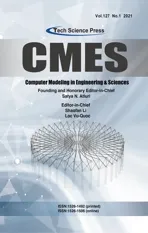Alcoholism Detection by Wavelet Energy Entropy and Linear Regression Classifier
2021-04-27XianqingChenandYanYan
Xianqing Chen and Yan Yan
1School of Electronic Science and Engineering,Nanjing University,Nanjing,210093,China
2Department of Electrical Engineering,College of Engineering,Zhejiang Normal University,Jinhua,321004,China
3Educational Information Center,Liming Vocational University,Quanzhou,362000,China
ABSTRACT Alcoholism is an unhealthy lifestyle associated with alcohol dependence.Not only does drinking for a long time leads to poor mental health and loss of self-control,but alcohol seeps into the bloodstream and shortens the lifespan of the body’s internal organs.Alcoholics oft en think of alcohol as an everyday drink and see it as a way to reduce stress in their lives because they cannot see the damage in their bodies and they believe it does not affect their physical health.As their drinking increases,they become dependent on alcohol and it affects their daily lives.Therefore,it is important to recognize the dangers of alcohol abuse and to stop drinking as soon as possible.To assist physicians in the diagnosis of patients with alcoholism,we provide a novel alcohol detection system by extracting image features of wavelet energy entropy from magnetic resonance imaging(MRI)combined with a linear regression classifier.Compared with the latest method,the 10-fold cross-validation experiment showed excellent results,including sensitivity 91.54±1.47%,specificity 93.66±1.34%,Precision 93.45±1.27%,accuracy
KEYWORDS Alcohol detection;wavelet energy entropy;linear regression classifier;cross-validation;computer-aided diagnosis
1 Introduction
Alcoholism is one of the mental health problems.It is composed of two types:Alcohol dependence and alcohol abuse.Alcoholism could cause severe mental illness.Females are generally more vulnerable than males to the harmful effects of alcohol,because of their lower ability to metabolize alcohol,smaller body mass,and a higher proportion of body adipose tissue [1–3].Many people are currently suffering from alcohol abuse.Many people believe that alcohol can relieve fatigue and relieve stress,or they can escape from reality.They often ignore the huge invisible damage it can do to their internal organs.Not only are overexcitability and aggressive mental disorders manifest themselves,but neurological damage and kidney failure are also major problems in alcoholism.Timely and accurate alcoholism tests can avoid prolonged heavy alcohol dependence and reduce the risk of acute kidney injury.For young people in their prime,alcohol abuse is a serious factor affecting their physical development throughout their lives.Heavy drinking can affect brain development,leading to memory loss and concentration problems.At the same time,the immature development of young people leads to the poor ability of each organ to deal with alcohol,which may easily lead to the hidden danger of fatty liver or cirrhosis.Alcohol is often essential for many young people’s celebrations or activities.They are encouraged to drink to avoid being excluded and discriminated against by their peers.In such a bad drinking environment,more young people are likely to be psychologically hard to get rid of the desire for compulsory drinking,thus falling into the harm of alcohol poisoning.
According to the World Health Organization,about three million people die each year from excessive drinking.Alcohol accounts for 5.1% of the global burden of disease.In the 2016 statistics,the globalper capitaalcohol consumption of aged 15 or older is around 6.4 litres,while Europe,the Americas and the Western Pacific region are far above the world’s average alcohol consumption levels,around 9.8 litres,8.0 litres and 7.3 litres.Deaths due to excessive alcohol consumption account for 10% of all deaths in the same age group,and mortality and hospitalization rates are also higher among the poor,suggesting that vulnerable groups are more likely to be alcohol-dependent.It is regrettable that among the 155 countries that responded to the survey,there is a significant lack of postgraduate training courses to treat drug abuse,and that only about 15 percent of the countries have preventive measures.
The main causes of alcohol abuse are dull daily habits and stress.Avoiding excessive alcohol exposure in the early stages of alcoholism is the best way to protect people from the effects of alcoholism.Therefore,it is necessary to replace the daily drinking entertainment with healthier activities.Finding hobbies appropriately,replacing alcohol as a boring pastime with something meaningful,and reducing unnecessary drinking in daily life are all helpful to improve drinking habits.Controlling alcohol consumption in the early stage can effectively curb alcohol dependence,and the symptoms of alcohol abuse in the early stage are easy to miss the best time for selfadjustment once they are ignored.
Alcoholism influences all parts of the body,and it affects the brain.The size of gray matter (GM) and white matter (WM) of alcoholism patients are reportedly less than age-matched controls [4],and this shrinkage can be observed using magnetic resonance imaging (MRI).Thus,this paper aims to develop an artificial intelligence (AI) and MRI based alcoholism detection system (ADS).
Recently,many ADSs were reported.Hou [5] used Hu moment invariant (HMI) as feature extractor,and used an improved particle swarm optimization (IPSO) as classifier.The detection system developed is more accurate than genetic algorithm,firefly algorithm and particle swarm optimization algorithm.Yang [6] also used Hu moment invariant to input the seven feature results into two classifiers,the twin support vector machine and the generalized eigenvalue proximal support vector machine.He employed several different machine learning techniques,and found support vector machine (SVM) gives the best result.Jiang [7] used pseudo Zernike moment (PZM)as the image feature combined with kernel support vector machine for intelligent pathological brain detection.Chen et al.[8] used weighted fractional Fourier transform (WFFT) to extract the magnetic resonance image spectrum information,and then reduced the spectral characteristics through principal component analysis.The results of 5×5 cross-validation using the support vector machine (SVM),proximal generalized eigenvalue (proximal generalized eigenvalue) and double support vector machine show that the results of three methods are superior to the eight latest methods in time,and it proves that the feature extraction of weighted fractional Fourier transform is simple and effective.Qian [9] uses wavelet entropy as image feature,combines two-layer feed-forward neural network and improved cat swarm optimization (CSO),and gets better experimental results than the other four bio-inspired algorithms.Sangaiah [10] presented a customized convolutional neural network based on an imaging 10-layer convolutional neural network diagnosis method.The network consisted of three advanced technologies of parametric rectified linear unit,batch normalization and dropout,and fine-tuned the network structure to obtain better performance than other methods at that time.Xie [11] used the AlexNetbased transfer learning model to detect alcoholism.Compared with the ordinary deep learning,the transfer learning has a pre-trained model,and only needs fine-tuning to make it easier and faster to achieve the goal of model establishment than training the randomly initialized neural network.Shah et al.[12] used orthogonal wavelet filter bank and K-nearest Neighbor supervised machine learning algorithms to classify normal and alcoholic electroencephalogram signals.Bavkar et al.[13] separate the electroencephalogram rhythms by using Narrow band pass Butterworth filter.the separated rhythms feature can be detected by K-nearest Neighbor algorithm to achieve efficient electroencephalogram detection.Bavkar et al.[14] proposed alcoholism detection method from visually evoked potential by using complexity and nonlinearity features and combined with ensemble subspace K-nearest Neighbor classifier.A binary particle swarm optimization algorithm is used to reduce the classification error and a new fitness function is designed to optimize the classification model to obtain an accurate and fast detection system.
The contribution of this study is to put forward a new alcohol detection method based on computer vision and image processing [15–19] to reduce the difficulty for physicians to diagnose patients with alcoholism.We propose a new wavelet energy entropy method based on which the energy information in the signal or system can be represented as image features.In addition,we combine a simple algorithm with a high-speed linear regression classifier.The performance was tested by calculating the mean value and standard deviation through the use of 10-fold crossvalidation.Finally,an experiment is given to explain how to choose the optimal decomposition level of the hyper-parameter,namely the wavelet energy entropy.
2 Methodology
Our method first obtains the image features of the magnetic resonance imaging (MRI)data in a higher-dimensional space through wavelet energy entropy,then the hyperplane of linear classification is used to separate the positive and negative samples,and establishes the model of the relationship between variables by linear regression.Finally,the 10-fold cross-validation is used to calculate the mean and standard deviation to verify the performance of the constructed model.Figs.1a,1b show two samples of the healthy brain and an alcoholic brain.
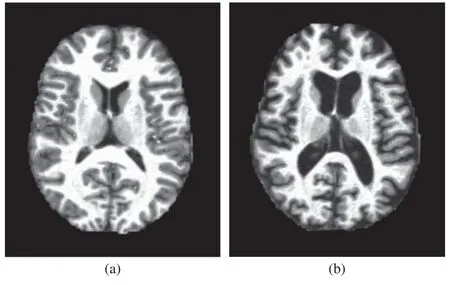
Figure 1:Two samples of our dataset (a) Healthy brain (b) Alcoholism brain
2.1 Wavelet Energy Entropy
We use a new image feature extraction method [20,21].Firstly,we collected the vibration signals of magnetic resonance imaging (MRI) of alcoholism and performed discrete wavelet transform.Then,we calculated the maximum energy through the wave coefficient and combined it with Shannon entropy to obtain the efficient classification feature—wavelet energy entropy (WEE).The traditional Fourier transform produces smooth results for non-stationary signals in both the time domain and frequency domain.The resulting value of the arbitrary component of the spectrum depends on the time domain waveform in(−∞,∞).In contrast,discrete wavelet transforms [22–26] can solve the spectrum analysis of time-varying or transient signals and decompose image signals into a linear superposition of a group of orthogonal signals.The discrete wavelet decomposition process is shown in the Fig.2,where L represents a low level and H represents a high level.

Figure 2:The process of discrete wavelet decomposition
Discrete wavelet transform has an excellent detection effect,which can achieve fast computation.Furthermore,it has the advantages of automatically adjustable time-frequency resolution for time-frequency domain analysis.The dimensionality of the discrete Wavelet transform coefficient [27,28] can be reduced by getting the wavelet energy feature by calculating the wavelet coefficients of the input image decomposition.The advantage of Shannon entropy is that it not only quantitatively measures the size of information,but also provides the theoretical optimal value for information coding [29–32].Combined with the above optimal methods as the MRI image feature extraction,the reduced and accurate detection space can obtain high-quality feature vectors as the input signal of the classifier,improving the overall efficiency of the algorithm.
In the process of image extraction,we assume that the decomposition level of the wavelet coefficient of signalS(l,t)island the translation ist.The energy signal is represented byE(l,t),and we have:

Then the Shannon entropy of the energy coefficientE(l,t)is defined as WEE atllevel,

2.2 Linear Regression Classifier
The Linear regression classifier (LRC) [33,34] is born from the concept that there is a linear relationship between features and classification results,which means that the sample of a particular object is classified by linear subspace.The nonlinear classification has the advantage of surface or combination of multiple hyperplanes owing to the lack of limitation,but its programming complexity increases greatly.In contrast,the LRC is simpler and has the ability of automatic learning,which makes the programming of its classifier easier and the operation efficiency is higher than that of the nonlinear classification method.The establish of a model based on LRC is widely used in data analysis as a supervised machine learning algorithm.There are many typical LRCs,including linear discriminant analysis,support vector machine [35–37],Logistic regression and so on.
The principle of LRC is to divide samples into positive and negative by a hyperplane that does not care about the dimension of space,and the most classical basic expression isy=wx.The model is a linear function of parameters,wherexrepresents samples andwrepresents the weighted value.The LRC is mainly composed of two parts:One is the scoring function;the other is the loss function.The Score function is a mapping function from the original image to the category score,and the loss function is used to quantify the consistency between the predicted score of the classification tag and the real tag.
The category decision of this model is completed by summing up the product of the characteristics of each dimension and their respective weights.The simplest dichotomy we use is to make the data feature belong to [0,1].Therefore,a function is required to attribute the original data eigenvalues to a value set and map them to [0,1].
We assume that the extracted image eigenvalues are located in the linear subspace in a specific category and that a data setDjwith a classified number ofnis grouped into a set {D1,D2,...,Dn}.We defined imageAjof class j-th alcoholism as a combination of the same classDjsamples.So,we have:

It is not necessary to know the statistical information about the estimator and the measurement.The least square estimation method is used for parameter estimation because of its simplicity.Through least square estimation,the reconstruction coefficientrjis as follows:

Then we reconstructed imageAjof the alcoholism image,

The similarity of alcoholism images to the j-th class was estimated by the reconstruction errorejof the j-th class,

It is possible to assume an unknown picture of alcoholismI.By using all n-class models to calculate the reconstruction error,Iis classified under the following label,

The LRC can intuitively express the relationship between independent variables and dependent variables according to the coefficients and give the interpretation of each variables.At the same time,LRC has the obvious advantages of fast modeling speed and running speed in case of large data volume.However,it is unavoidable that the LRC cannot fit the nonlinear data well.Therefore,it is necessary to first determine whether the variables are in linear relationship,to avoid the use of overly complex nonlinear classifiers on the one hand,and improve the efficiency of modeling on the other hand.
2.3 Cross Validation
379 slices were obtained in which there are 188 alcoholic brain images and 191 non-alcoholic brain images.The division is shown in Tab.1.The 10-fold cross-validation approach [38–40] is used here to evaluate the model.

Table 1:Dataset division into training,validation,and test sets
Compared with cross-validation [41,42] using the same number of folds in the total number of samples,10-fold cross-validation greatly reduces the training complexity,because the former is only suitable for a small number of samples [43–46].Therefore,10-fold cross-validation is the most popular way to test the performance of a model.
The method first divides the data set into 10 folding subsets of the same size randomly as shown in Fig.3.Nine of them are used as training sets to train the model,and the other part is used as test sets to evaluate the model.In such 10 iterations,each subset is rotated once as a test set,and the remaining subsets are used as training sets to obtain fair test results.The model obtained after training on each training set was tested on the corresponding test set.Each evaluation index’s results of the model were calculated and saved for 10 times,and the estimation of algorithm accuracy was obtained through average calculation [47–49].
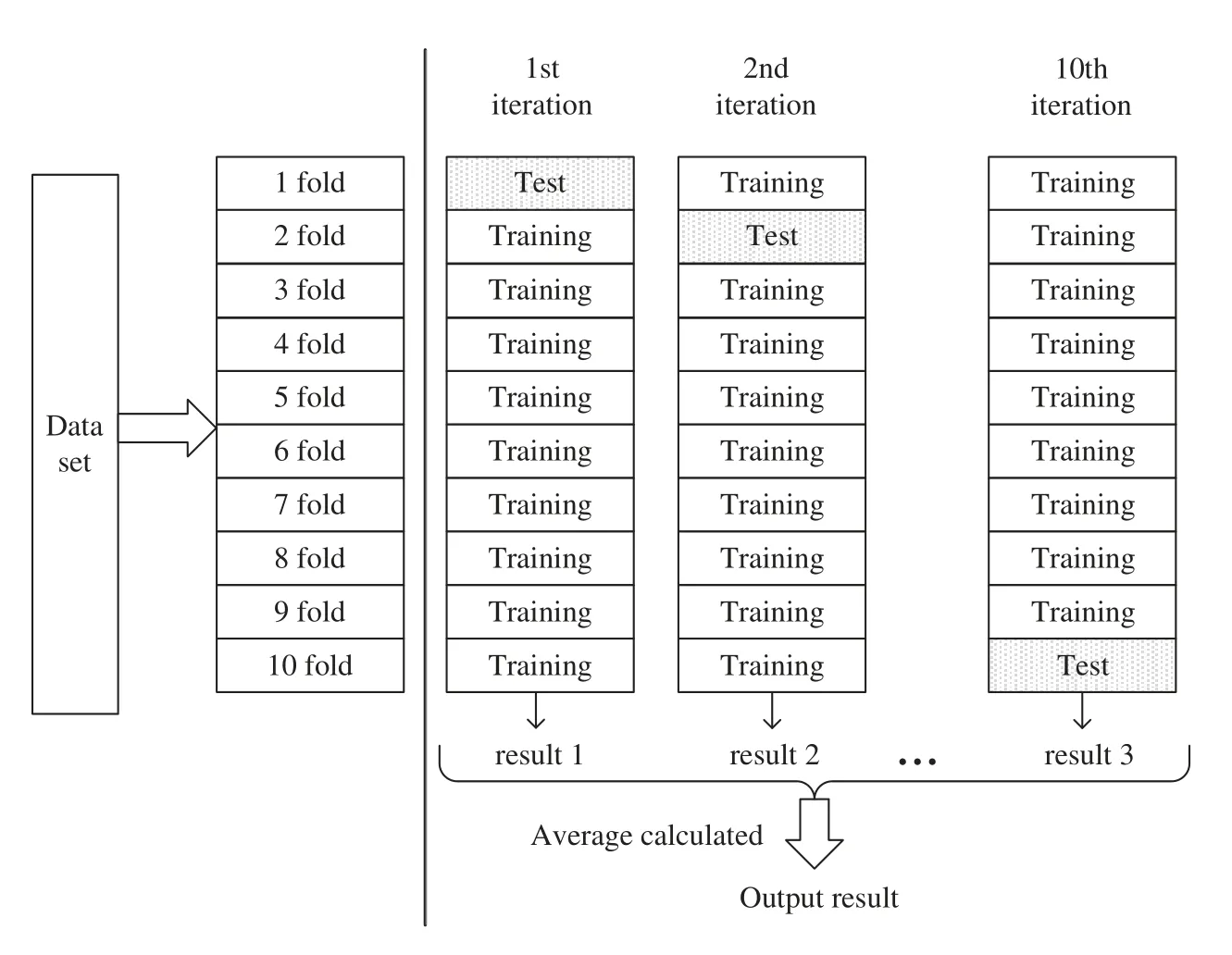
Figure 3:The process of 10-fold cross-validation
The single cross-validation results are less reliable because of possible variation.In contrast,the characteristic of regular repetition of 10-fold cross-validation makes the method reliable in verifying model performance.Although in some cases it is not substantially different from 5-fold or 20-fold cross-validation.However,there are still researches and theoretical evidence to prove that 10-fold cross-validation is an appropriate choice to prevent neural network from overfitting to obtain the best error estimate.
2.4 Implementation
The process we realized was divided into three parts.First,the wavelet transform coefficient of the image was extracted,then the wavelet energy was calculated and the entropy value was obtained by combining Shannon entropy,and finally the feature vector obtained was classified as the input of the linear regression classifier.The statistical results of this model are obtained by using 10×10-fold hierarchical cross-validation [50].Because the principle of cross-validation is to randomly assign validation sets and test sets,these images are set randomly when running cross-validation.
During the experiment,we compared six indicators:Sensitivity (sen),specificity (spc),precision (pre),accuracy (acc),F1 score (F1) and Matthews correlation coefficient (MCC).To evaluate the classifier,the output of the classifier is compared with the ideal reference classification.Suppose the question was whether someone had alcohol poisoning.Some of them suffered from alcoholism,and the results of the classification tests correctly indicated that they were positive.We useRUfor those who were included in the experiment with true positivity.People who have alcohol poisoning are not classified as patients on the test and the error we useFUfor that is called false negative.Some people do not have the disease and the tests show they are truly negative,we call themRH.Finally,there may be healthy people who test positive-false-positive,which we will callFH.
Sensitivity represents the ratio of the correct markers in our program to all actual patients with alcoholism,and the formula is expressed as follows:

The accuracy value can usually clearly show the performance of our model.The formula for accuracy during the experiment is as follows:

However,the accuracy of the model is likely to be affected by the imbalance of positive and negative samples.Therefore,the single accuracy value cannot well reflect the overall situation of the model.
Specificity was the correct marker in the experiment for all real people who did not have the disease,and its expression formula is:

Precision is also one of the evaluation indexes for the predicted results.It mainly represents the percentage of the results predicted by the model as positive samples that are actually positive samples.The formula for the precision is as follows:

The high accuracy rate means that it can well reflect the stronger ability of the model to distinguish negative samples.
F1-score is the harmonic mean of accuracy and recall rates.

It mainly aims at the shortcomings of missing data caused by high accuracy rate caused by high threshold and the reduction of prediction accuracy caused by high recall rate.
MCC is a relatively balanced indicator that describes the correlation coefficient between the predicted results and the actual results.The expression formula of MCC is as follows:

One of its advantages is that it can also be used in the case of sample imbalance.It considers True Positives,False Positives,False Negatives and True Negatives as well.The value range of MCC is [−1,1].A value of 1 means that the prediction is completely consistent with the actual result;a value of 0 means that the predicted result is lower than the random prediction result;and a value of−1 means that the predicted result is completely inconsistent with the actual result.
3 Results and Discussions
3.1 Wavelet Decomposition
Wavelet transform is a local transform in time and frequency domain.It can extract information from signals effectively by means of multi-scale refinement analysis of functions or signals by means of scaling and shifting.Fourier transform is a tool of mutual transformation from time domain to frequency domain,and it is one of the most widely used and effective analytical methods in signal processing.After the appearance of wavelet analysis,it inherits and develops the features of Fourier transform localization,which is suitable for signal time-frequency analysis and processing,solves the defect of Fourier transform,and becomes a popular method in many application fields.
The Fourier transform is a global transformation,and the values of each point in the function affect the result of the transformation.In contrast to the Fourier transform,wavelets use local bases,and the coefficients are affected only by the points on the support of a particular base.This results in wavelets containing not only frequency information but also time information.The Fourier transform gives information in the one-dimensional frequency domain,which is a mixture of important features of frequency.However,the time information cannot be read directly from the frequency domain.The result of the wavelet transform is two-dimensional information,the horizontal axis is the time axis,and the vertical axis is the frequency.Therefore,a wavelet is very useful for analyzing instantaneous time-varying signals,and some features of the image can be fully highlighted through transformation.
The wavelet decomposition of magnetic resonance imaging is shown in the Fig.4,and the process is summarized as follows:Firstly,the image signal is decomposed into two parts:Lowfrequency approximation and high frequency detail.Next,we will continue to divide the low frequency approximation part into the low frequency approximation and the high frequency detail part,and then decompose the low frequency approximation part to only one point in each part.The high frequency details are not decomposed each time.
A Fourier coefficient usually represents a signal component that runs through the wholetime domain.The advantages of wavelet transform allow for more accurate local description and separation of signal features.For special signals,wavelet coefficients are suitable for most instantaneous signals,and it is easy to interpret image information.The advantage of wavelet transform is that its transform has not only the frequency-domain resolution of Fourier transform but also the time-domain or special resolution.However,because the one-dimensional signal is expressed by the two-dimensional coefficient,it is easy to have great redundancy.

Figure 4:Wavelet decompositions.(a) Raw image (b) Level 1 decomposition (c) Level 2 decomposition (d) Level 3 decomposition (e) Level 4 decomposition
3.2 Statistical Results of Different Decomposition Levels
Tab.2 shows the performance of our model in each indicator after 10 runs of 10-fold crossvalidation under the condition of decomposition Level 1.In the first experiment,we obtained the sensitive value of 88.19±2.06%,the specific value of 89.21±1.55%,the Precision of 88.97±1.38%,the accuracy of 88.71±1.17%,the F1 score of 88.56±1.24%,and the Matthews correlation coefficient value of 77.44±2.32%.

Table 2:10 runs of 10-fold cross-validation of our method (decomposition Level=1)
Compared with the existing methods support vector machine [6],pseudo Zernike moment [7]and Weighted fractional Fourier transform [8],it seems to improve in terms of value comparison,but this value has already been surpassed by other methods.
In the following experiments,the results of the experiments at the decomposition Level 2 are shown in Tab.3.Sensitivity,specificity,precision,accuracy,F1 scores and MCC values were obtained as 90.53±2.79%,92.93±1.19%,92.67±1.08%,91.74±1.35%,91.56±1.49%,83.54±2.62%,respectively.Although the experimental results showed an increase in the level of decomposition 1,they were almost the same as the latest methods.
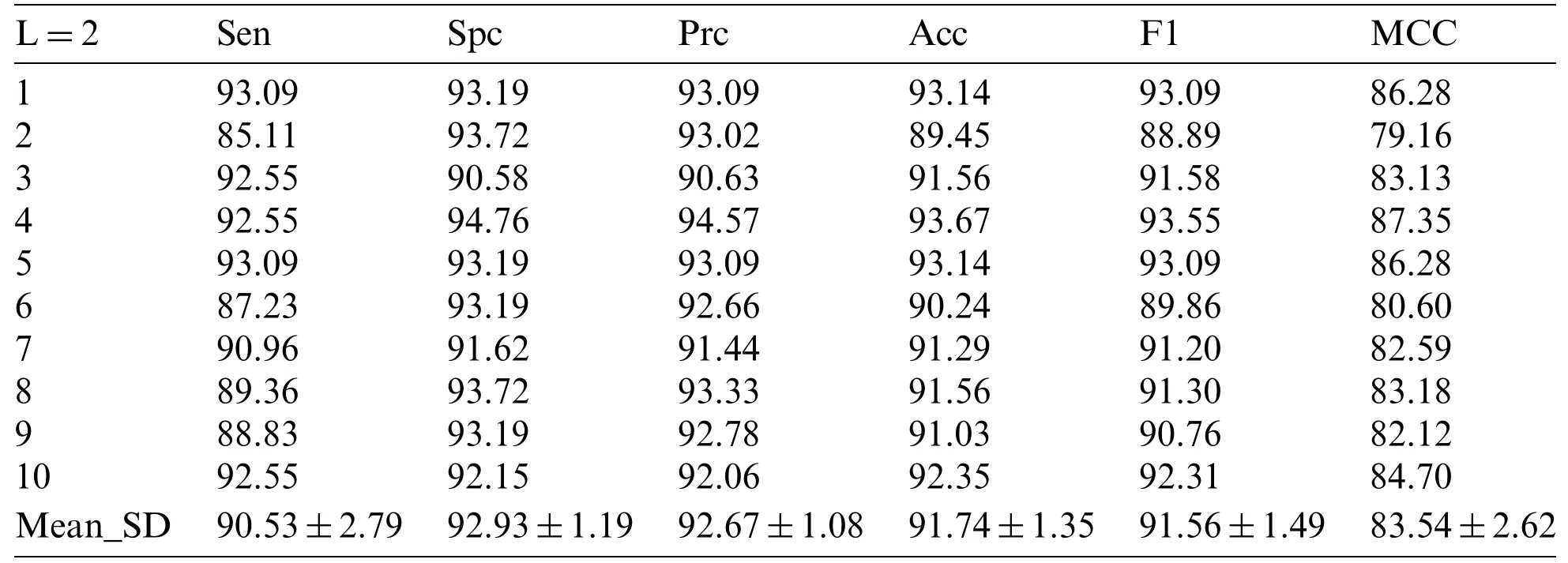
Table 3:10 runs of 10-fold cross-validation of our method (decomposition Level=2)
In the experiment with the decomposition Level 2,it can be seen that the improvement of the decomposition level is conducive to the improvement of the model test performance.In the decomposition Level 3 experiment in Tab.4,we did obtain new and higher values,in which the sensor value is 91.54±1.47%,the specific value is 93.66±1.34%,the precision value is 93.45±1.27%,the accuracy value is 92.61±0.81%,the F1 score is 92.48±0.83% and the MCC value is 85.26±1.62%.
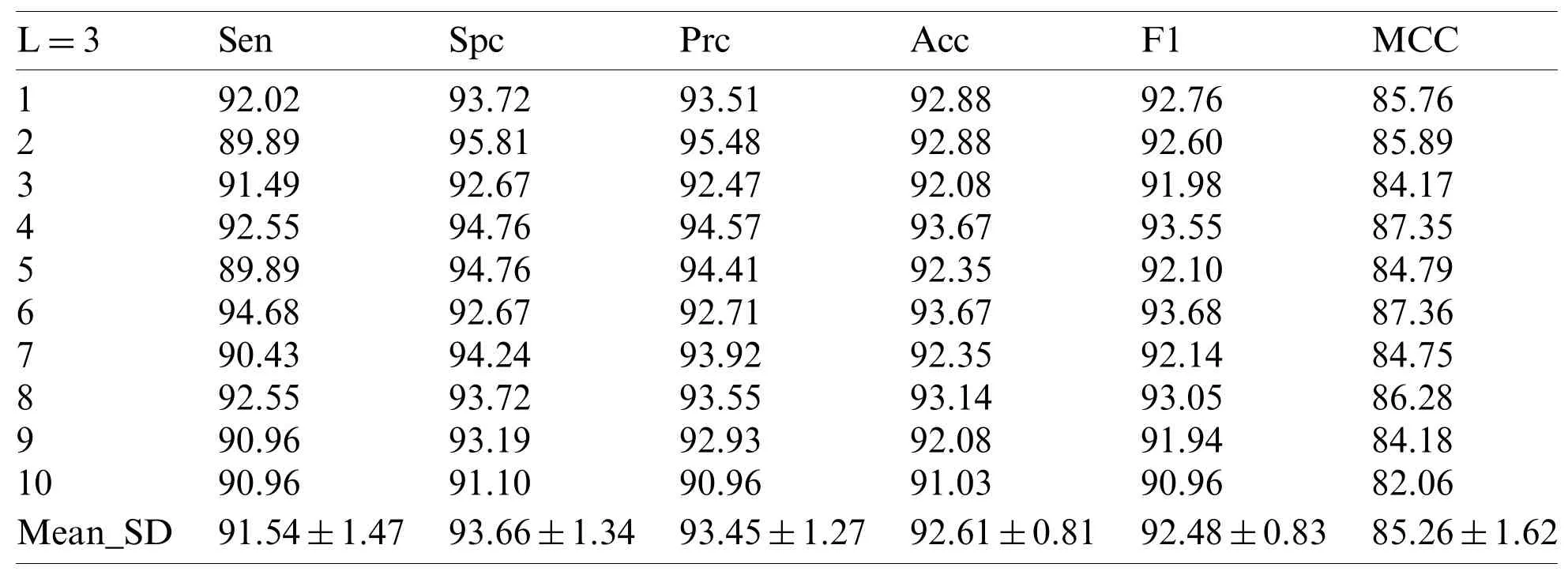
Table 4:10 runs of 10-fold cross-validation of our method (decomposition Level=3)
In the experiment with the decomposition Level 4 show in Tab.5,there was no significant difference between the numerical value and the experiment with the decomposition Level 1,and the numerical value was even lower than that of the experiment with the decomposition Levels 2 and 3.
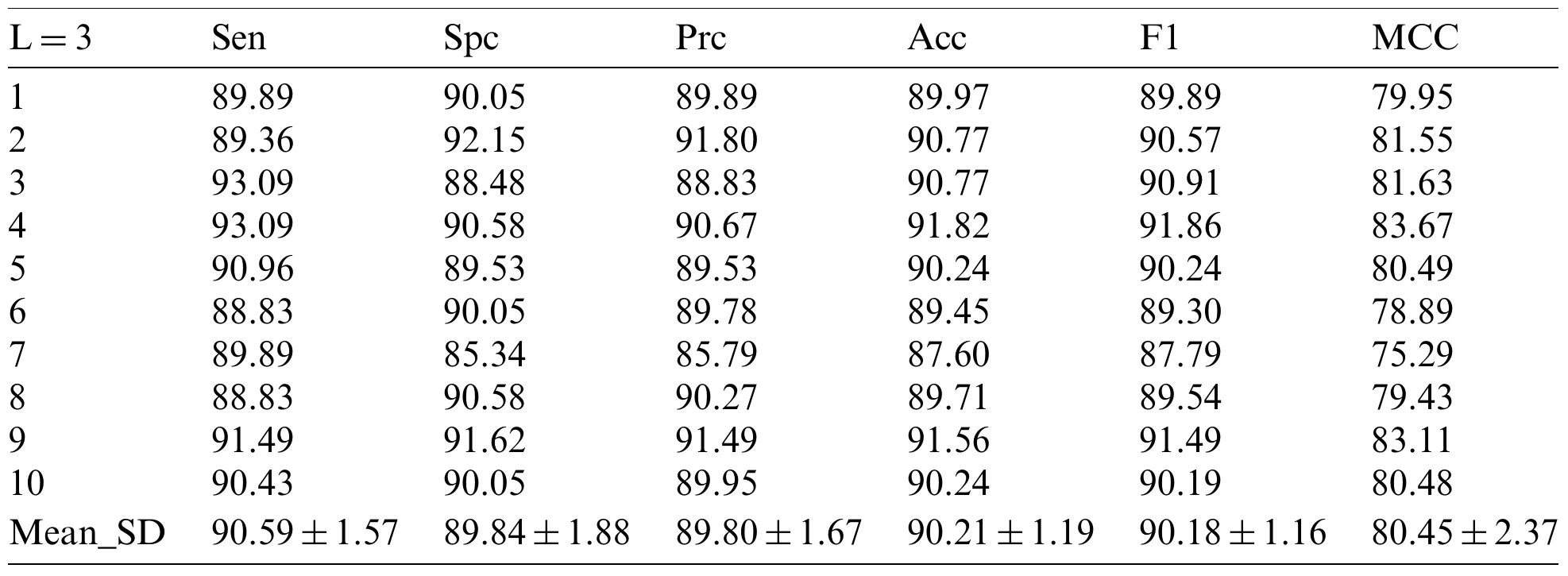
Table 5:10 runs of 10-fold cross-validation of our method (decomposition Level=4)
As can be seen from the Fig.5,in the experiment before the decomposition Level 3,all values increase steadily.The value of MCC increases by leaps before decomposition Level 3,and drops to decomposition Level 4.However,the experimental performance evaluation value of decomposition Level 4 is generally lower than decomposition Level 2,the model performance drops sharply.Therefore,the optimal decomposition level in the experiment is 3,and the six evaluation results in the experiment are the highest value in the four experiments to obtain the best model performance.
3.3 Comparison to State-of-the-Art
In this part,our method is compared with the most advanced methods in the field of image detection by combining wavelet energy entropy and linear regression classifier.
The first method uses Hu moment invariants to extract image features,and combines predator-prey adaptive inertia chaotic particle swarm optimization algorithm to train the single hidden layer neural network classifier [5].It is shown in the form with the abbreviation of HMI-IPSO.The second method also takes Hu moment invariants as the image feature and combines two classifiers,twin support vector machine and generalized eigenvalue proximal support vector machine for detection [6].In the table,this method is represented by SVM.The third method uses pseudo Zernike Moment and kernel support vector machine to conduct intelligent detection of images [7].We describe this method in the table as PZM.The next method,we use WFFT for short,uses principal component analysis to extract the spectral features of weightedtype fractional Fourier transform and combines two variants of generalized eigenvalue proximal support vector machine and twin support vector machine similar to the second method for image classification [8].The last comparison method uses wavelet entropy as image feature,and uses 2-layer feed-forward neural network and cat swarm optimization to search and track the image for identification.
The data for the comparison results of our methods and these methods are listed in Tab.6,and Fig.6 shows a bar chart of the comparison results.

Table 6:Comparison to state-of-the-art methods
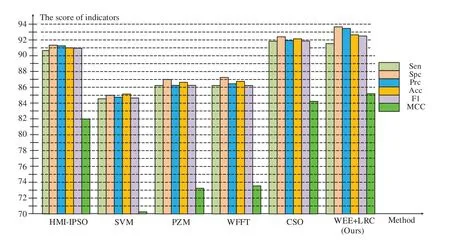
Figure 6:Comparison of six methods
It can be observed that the WEE+LRC method proposed by us achieved the best performance in all six evaluation values of the six methods.In the comparison of the specificity values of the six methods shown in the table,the SVM method obtained a score of 85.70%.PZM received a score of 87.02%.WFFT received a score of 87.27%.The HMI-IPSO method has been improved with a value of 91.33% Compared with the HMI-IPSO method,the CSO method increased to 92.40±1.22%,while our method WEE+LRC obtained the highest score of 93.66±1.34%.
In the precision comparison,SVM,PZM,WFFT,HMI-IPSO,CSO obtained 84.78%,86.23%,86.46%,91.92%,91.28%,respectively.Our WEE+LRC method was maintained at the highest score of 93.45±1.27%.For the comparison of accuracy and MMC,our method also maintained the maximum values of 92.61±0.81% and 85.26±1.62%.
From the bar chart,our method maintained a high level of specificity,precision,accuracy,F1 score and Matthews correlation coefficient.Compared with the previous method,we have about 8% improvement in numerical values and a better score compared with the latest method,indicating that our algorithm has a higher performance.
3.4 The Effect of WEE
We compared our feature extraction method with the popular wavelet energy and wavelet entropy.In order to ensure the fair comparison of the same conditions,we carried out three levels of the wavelet transform,and the comparison results are shown in Tab.7.It can be seen that in the comparison of these six indicators,our approach is well beyond energy and entropy.In terms of sensitivity,specificity,precision,accuracy and F1 scores,our methods are almost above the wavelet energy and the wavelet entropy by about 1%–3%.In the Matthews coefficient comparison,it exceeds the other two methods by about 5%,6%.

Table 7:WEE compared to wavelet energy and wavelet entropy (j=3)
Fig.7 below shows the difference between our approach and others more clearly than the table.In the comparison of sensitivity,accuracy and F1 scores,the highest scores of our method were 91.54±1.47%,92.61±0.81% and 92.48±0.83%,while the wavelet energy was only 87.66±2.02%,89.55±0.85% and 89.27 ± 0.96,which were all lower than the wavelet entropy of 90.43±1.37%,90.11±1.05% and 90.07±1.05%.

Figure 7:Comparison of three feature extraction methods
In the comparison of specificity and precision,although the wavelet energy fractions of 91.41±1.33% and 90.97±1.19% were higher than the 89.79±1.49% and 89.72±1.36% of the wavelet entropy,they were still lower than our scores of 93.66±1.34% and 93.45±1.27%.
In the comparison of Matthews coefficient,it can be seen that there is a leap difference between our method and the other two methods.The highest value of our method is 85.26±1.62%,far exceeding the 79.18±1.67% of the wavelet energy and 80.23±2.10% of the wavelet entropy.
In general,the score of the feature extraction method proposed by us is significantly better than that of wavelet energy and wavelet entropy in six evaluations,indicating that we have a feature extraction method with higher quality and higher precision to improve the overall performance of the model.
3.5 Classifier Comparison
In this study,we compared our LRC classifier with different classifiers:Decision tree (DT),support vector machine (SVM),and naive Bayesian classifier (NBC).The results are shown in Tab.8.

Table 8:Comparison with different classifiers
As can be seen from the data comparison of the table,the average value of our assessment is always the highest.In the comparison of six indicators,our method is stable above the SVM score by about 1%,and the DT method is lower than the SVM score by about 1% to 4% in all values.The approach of NBC had the lowest results in the experiment,at least 3% less than our approach.In particular,NBC’s approach was 12% lower than ours in the MCC comparison.Although the values of SVM are at least 1% and 4% higher than those of DT and NBC,respectively.The highest score of our method represents its best experimental performance among all method comparisons.
4 Conclusion
We propose a novel alcohol detection system,which is based on a new image extraction method wavelet energy entropy and uses linear regression classifier for diagnosis.Wavelet energy entropy extracted from magnetic resonance imaging (MRI) replaces image features with signals,which can simplify complex image information and thus improve detection efficiency.The linear regression classifier can visually distinguish and express the relationship between variables according to the image information provided.The experimental results of cross-validation show that the efficient modeling speed and running speed of linear regression classifier also have obvious advantages in comparison with the latest detection methods.For doctors,high quality and efficient auxiliary diagnostic tools are needed.Our proposed alcohol detection system can meet the diagnostic needs of doctors and help relieve their diagnostic pressure.
In future studies,our method can continuously improve performance,improve detection accuracy and reduce detection complexity through optimization experiments.The new study will not be limited to alcohol diagnosis,it could also be used for other types of classification tasks.
Funding Statement:This research was supported by Zhejiang Provincial Natural Science Foundation of China under Grant No.LY17F010003.
Conflicts of Interest:The authors declare that they have no conflicts of interest to report regarding the present study.
杂志排行
Computer Modeling In Engineering&Sciences的其它文章
- Nonlinear Problems via a Convergence Accelerated Decomposition Method of Adomian
- Exact Run Length Evaluation on a Two-Sided Modified Exponentially Weighted Moving Average Chart for Monitoring Process Mean
- An Effective Feature Modeling Approach for 3D Structural Topology Design Optimization
- Three-Dimensional Modeling of the Retinal Vascular Tree via Fractal Interpolation
- Experimental and Numerical Study on the Shear Strength and Strain Energy of Rock Under Constant Shear Stress and Unloading Normal Stress
- Eliciting Requirements from Stakeholders’Responses Using Natural Language Processing
